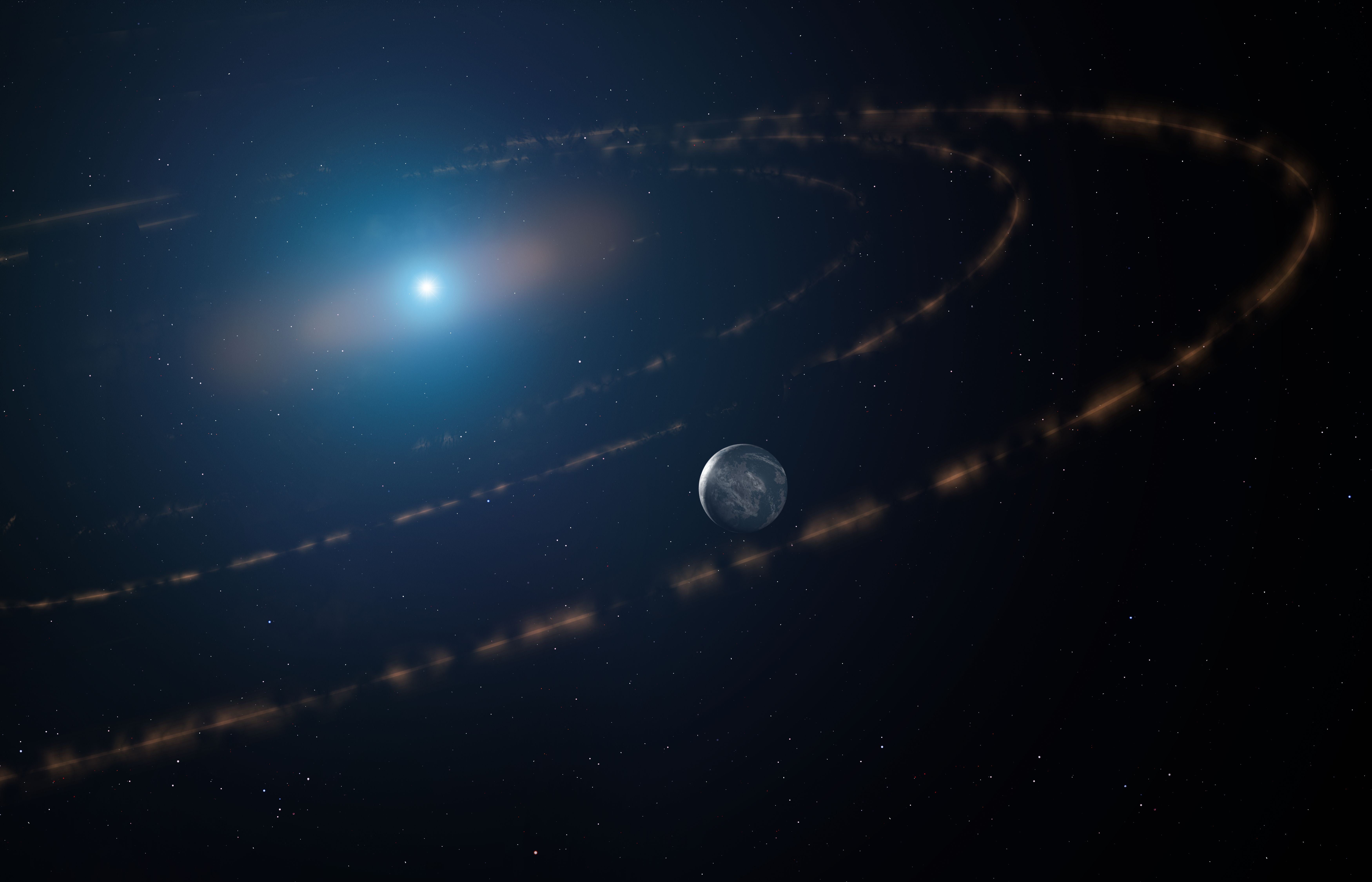James Webb Telescope could find aliens in the glare of white dwarf suns, scientists say
The Webb Telescope could spot alien worlds where no other telescope has been able to, in the light of nearby dwarf stars

Your support helps us to tell the story
From reproductive rights to climate change to Big Tech, The Independent is on the ground when the story is developing. Whether it's investigating the financials of Elon Musk's pro-Trump PAC or producing our latest documentary, 'The A Word', which shines a light on the American women fighting for reproductive rights, we know how important it is to parse out the facts from the messaging.
At such a critical moment in US history, we need reporters on the ground. Your donation allows us to keep sending journalists to speak to both sides of the story.
The Independent is trusted by Americans across the entire political spectrum. And unlike many other quality news outlets, we choose not to lock Americans out of our reporting and analysis with paywalls. We believe quality journalism should be available to everyone, paid for by those who can afford it.
Your support makes all the difference.Scientists have uncovered a new technique for detecting Earth-like alien worlds — and signs of potential alien life — with astronomy’s newest tool: the James Webb Space Telescope.
In a new paper detailed in the Monthly Notices of the Royal Astronomical Society and available online on the academic preprint server Arxiv, astronomers from multiple institutions show how the Webb telescope could detect the heat signatures of exoplanets around white dwarfstars by analyzing the light of those stars, and never detecting the planets directly.
Going further, they show Webb could detect signatures of potential alien life, such as large quantities of oxygen and methane appearing together, in the spectral information of an exoplanet’s light.
If applied, the new technique could allow astronomers to detect habitable, and possibly inhabited exoplanets within about 32 light years of Earth.
“The catch is that we don't know of any terrestrial exoplanets orbiting white dwarfs,” Mary Anne Limbach, a PhD student in astronomy at Texas A & M University and lead author of the paper told The Independent in an interview. Astronomers will first need to use the new technique “to detect white dwarf exoplanets, and then, if we find any, we can perform longer follow-up observations to look for biosignatures.”
Exoplanets are planets around stars other than our Sun, and astronomers have found more than 5,000 such worlds to date. But the techniques they’ve used to find them are not particularly good at finding exoplanets around white dwarf stars, the dense, remnant core of burned out larger stars.
The Webb telescope, meanwhile, would have a hard time finding the infrared light, or the heat signature, of Earth-sized exoplanets around larger stars, because “in most cases, the host star drowns out the signal from the exoplanet,” Ms Limbach said.
White Dwarfs, which are about the size of Earth themselves, are different. Astronomers should be able to detect the light of an exoplanet mixed in with the light of the star, even though the planet itself is never directly resolved by the telescope.
“The light emitted at mid-infrared wavelengths from the white dwarf is only about 100 times more than the light emitted from an Earth-analog in the system. This excess in emitted light of about 1% is detectable with JWST,” Ms Limbach said. “Astronomers had not previously realized that this was a possible detection method.”
There are 34 white dwarf stars within about 40 light-years of Earth, she added, where Webb could potentially make such detections using its Mid-Infrared Instrument, or Miri.
Astronomers should be able to go further than that. Miri should allow them to detect the spectra of exoplanets around white dwarfs, the pattern of absorption or reflection in the light shining through an exoplanet’s atmosphere based on the molecules in that atmosphere.
“With MIRI, we could potentially detect water, ozone, methane and carbon dioxide,” Ms Limbach said. “Methane and ozone are the most interesting because detection of this molecular pair is a possible indicator of the presence of life.”
Molecular oxygen, that is, two oxygen molecules bound together, had widely been considered an important biosignature in astrobiology for decades study co-author and post-doctoral researcher at the Johns Hopkins Applied Physics Laboratory Jacob Lustig-Yaeger told The Independent.
“However, more recently, scientists have started to uncover numerous planetary circumstances that can lead to the production and accumulation of O2 in Earth-like exoplanet atmospheres through chemical pathways that do not require life to be able to explain,” he said. “These abiotic — not related to biology — oxygen production pathways can create a false positive for life if we aren’t careful.”
Detecting other molecules associated with life alongside oxygen can provide much better evidence that a biosignature on another world is coming from biological processes and alien life. Methane is one of those gases and is produced in large quantities by bacteria on Earth.
“Another feature worth mentioning about the oxygen+methane biosignature pair is that it is observationally favorable to search for compared to a lot of other potential biosignatures, particularly using JWST,” Dr Lustig-Yaeger said. “This makes it more practical to search for in the atmospheres of white dwarf exoplanets.”
Join our commenting forum
Join thought-provoking conversations, follow other Independent readers and see their replies
Comments